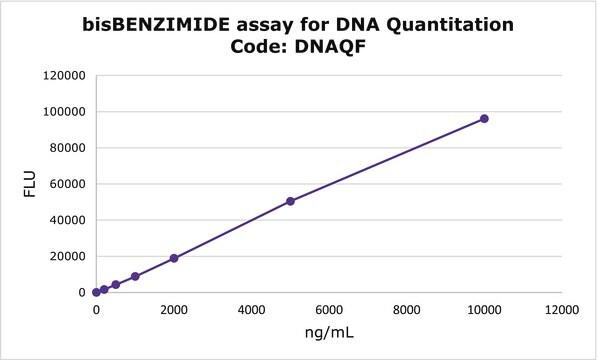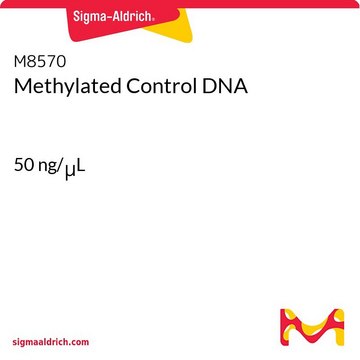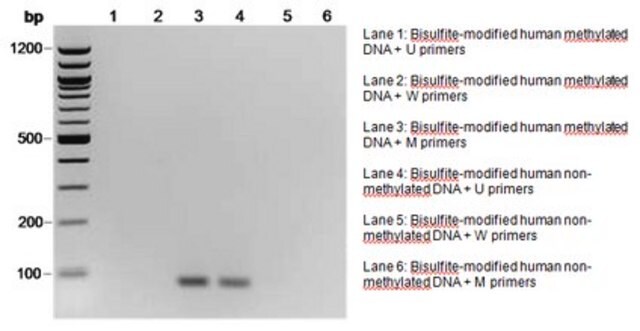MOD50
Kit de modificación de ADN Imprint®
For bisulfite DNA conversion & purification
Sinónimos:
Methylation-Specifc PCR preparation, bisulfite conversion kit, bisulphite modification
About This Item
Productos recomendados
General description
Application
Features and Benefits
- Only 50 picograms of DNA or 20 cells are required
- Procedure takes less than 2 hours
- Greater than 99% conversion rate
- Extremely low degradation
- Option of convenient one-step protocol
- Consistent and reproducible Bisulfite Modification
- Can be used with genomic, endonuclease digested, and FFPE DNA
Storage and Stability
Legal Information
Los componentes del kit también están disponibles por separado
- T3566Clear-view™ Snap-Cap microtubes, size 1.5 mL, naturalSDS
signalword
Danger
hcodes
Hazard Classifications
Acute Tox. 4 Oral - Aquatic Chronic 3 - Eye Dam. 1 - Met. Corr. 1 - Skin Corr. 1A
supp_hazards
Storage Class
8B - Non-combustible corrosive hazardous materials
flash_point_f
Not applicable
flash_point_c
Not applicable
Certificados de análisis (COA)
Busque Certificados de análisis (COA) introduciendo el número de lote del producto. Los números de lote se encuentran en la etiqueta del producto después de las palabras «Lot» o «Batch»
¿Ya tiene este producto?
Encuentre la documentación para los productos que ha comprado recientemente en la Biblioteca de documentos.
Los clientes también vieron
Artículos
There are several common ways to determine whether a gene contains methylated DNA. Since mammalian methylation occurs at cytosines, researchers take advantage of the fact that methylated cytosine (meC) is stable to bisulfite treatment but unmethylated cytosine is transformed to uracil under the same conditions.
Protocolos
Chromatin Immunoprecipitation qPCR for studying gene regulation across conditions.
Contenido relacionado
The Imprint DNA Modification Kit provides the reagents needed for bisulfite conversion and post-modification clean-up of DNA samples in less than 2 hours.
Nuestro equipo de científicos tiene experiencia en todas las áreas de investigación: Ciencias de la vida, Ciencia de los materiales, Síntesis química, Cromatografía, Analítica y muchas otras.
Póngase en contacto con el Servicio técnico










